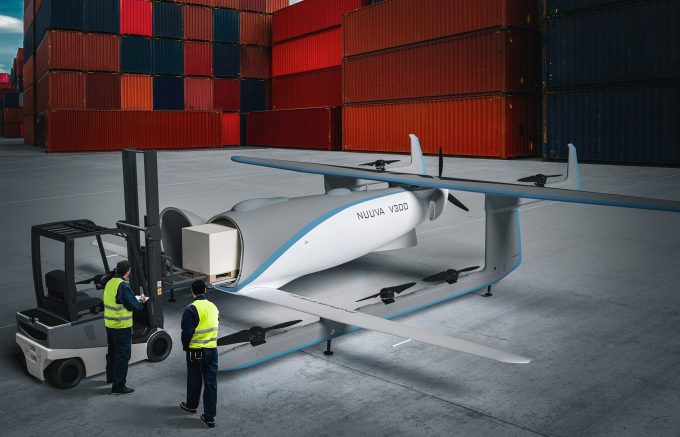Boeing delays 777 deliveries and axes 767F production
As indicated in The Loadstar last week, problems at Boeing will mean freighter orders will go ...
WMT: RECORDWMT: SALES AND EARNINGS BEAT WMT: INTERIMS ON THE RADARBA: EXCRUCIATING PAINKNIN: CLOUD INFRASTRUCTURE SOLUTIONKNIN: CLOUD INFRASTRUCTURE APPEALODFL: GRI DISCLOSUREHD: INVENTORY RESERVATIONHD: PAYOUT CONFIRMEDFDX: YIELD AND LEADERSHIPDSV: ANOTHER BULL IN TOWNLOW: STEADY YIELDBA: JOB CUTS ON THE AGENDAMAERSK: LITTLE TWEAKDSV: UPGRADEF: HUGE FINELINE: NEW LOW
WMT: RECORDWMT: SALES AND EARNINGS BEAT WMT: INTERIMS ON THE RADARBA: EXCRUCIATING PAINKNIN: CLOUD INFRASTRUCTURE SOLUTIONKNIN: CLOUD INFRASTRUCTURE APPEALODFL: GRI DISCLOSUREHD: INVENTORY RESERVATIONHD: PAYOUT CONFIRMEDFDX: YIELD AND LEADERSHIPDSV: ANOTHER BULL IN TOWNLOW: STEADY YIELDBA: JOB CUTS ON THE AGENDAMAERSK: LITTLE TWEAKDSV: UPGRADEF: HUGE FINELINE: NEW LOW

Pipistrel, a tech-based mobility company, claims to have “reimagined the future of air freight transport” with its Nuuva V300 hybrid-electric VTOL unmanned cargo aircraft.
The company is based in Slovenia where chief executive Gabriel Massey revealed that the first flight would take off before year end.
“The Nuuva V300 is making considerable progress towards a successful first flight,” he said.
Mr Massey believes the programme will do well among the larger, unmanned drones, but will also support and enable the development of technology that will benefit other programmes too.
“The Nuuva provides a simplicity of operation across several commercial use cases, including humanitarian aid, defence applications for transporting supplies and logistics,” said Mr Massey.
According to Pipistrel, the Nuuva was originally designed for use in sparsely populated or rural environments and, subsequently, as an urban logistics hub aircraft or for offshore deliveries. It can provide air cargo operations to areas where a runway does not exist and is also compatible with standard helicopter landing pads.
The aircraft has an internal volume of more than 100 cubic feet and is designed to hold up to three cargo pallets.
“We are pragmatic about taking a stepped approach with Nuuva. The first vehicle will require a remote operator with automatic missions,” Mr Massey explained.
Mr Massey acknowledged the challenges facing the advanced air mobility sector and mentioned key areas like battery technology, which must continue to evolve to increase performance, and Pipistrel is seeing progress on this.
Also, from an infrastructure standpoint, an eVTOL should be capable of landing at any vertiport, airport or heliport, and would require ground infrastructure for charging.
“Standardisation of this charging infrastructure is something we’re keeping a close eye on,” added Mr Massey.
Challenges often create opportunities and, as Mr Massey noted, the regulatory framework and requirements for cargo-carrying drones are less stringent than those for passenger-carrying eVTOLs without onboard pilots.
He said: “This not only makes cargo operations more feasible in the near-term, but also creates a pathway for broader acceptance and integration of advanced air mobility, paving the way for what’s next in this innovative field.”
Industry observers are keen to see if and when unmanned cargo VTOLs will be available at a commercially attractive cost, considering their electric power source. Mr Massey said as a hybrid aircraft, the Nuuva uses existing battery technology and this allowed Pipistrel to design a commercially viable product at a competitive price for cargo operations.
“We also considered the Nuuva’s operational flexibility, cost-efficiency and environmentally friendly performance, hence we’re confident that it will be well-positioned to meet the market’s demands,” said Mr Massey.
Meanwhile, Regent Craft, a manufacturer of all-electric sea gliders, recently unveiled plans to deliver its first Monarch seaglider aircraft to United Marine Egypt (UME) Shipping by the end of the decade. The vessel can carry just under 10 tonnes of cargo, for up to 650 km at 225 kph.
According to the company, Seagliders combine the high speeds of aircraft with the convenience and low costs of boats — all with zero emissions. Regent is working on compliancy and requisite international codes and standards.
The diversions and delays caused by Red Sea disruptions have strained global shipping capacity through most of 2024, which Regent said had caused them to note the increasing demand for seaglider transport solutions in the Red Sea region.
A large-scale return to the region by shipping seems inconceivable at present, but a partial return may be possible next year, according to recent comments by Emily Stausbøll, senior shipping analyst at Xeneta.
Meanwhile, Regent believes its first delivery to UME will signify “a shared commitment to innovation in the shipping industry with the potential to increase sustainability and efficiency in that region”.
Comment on this article